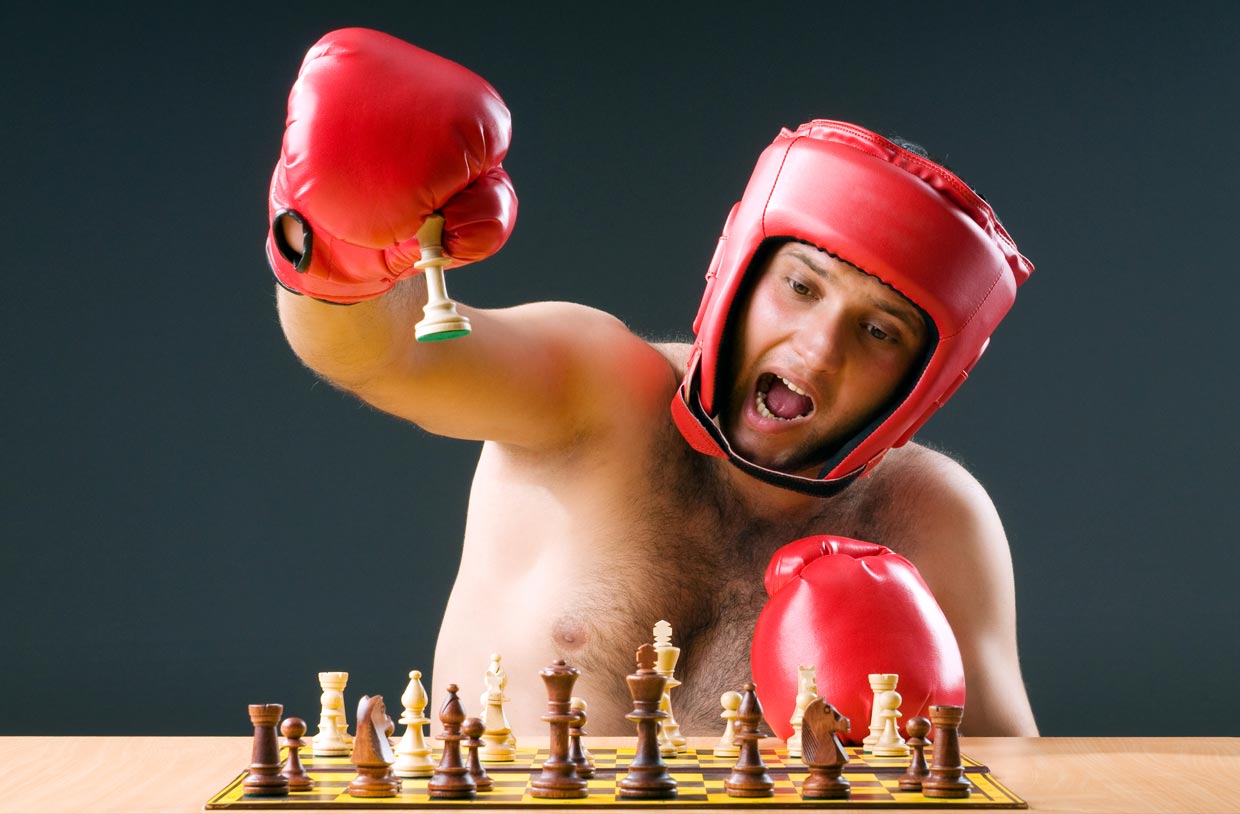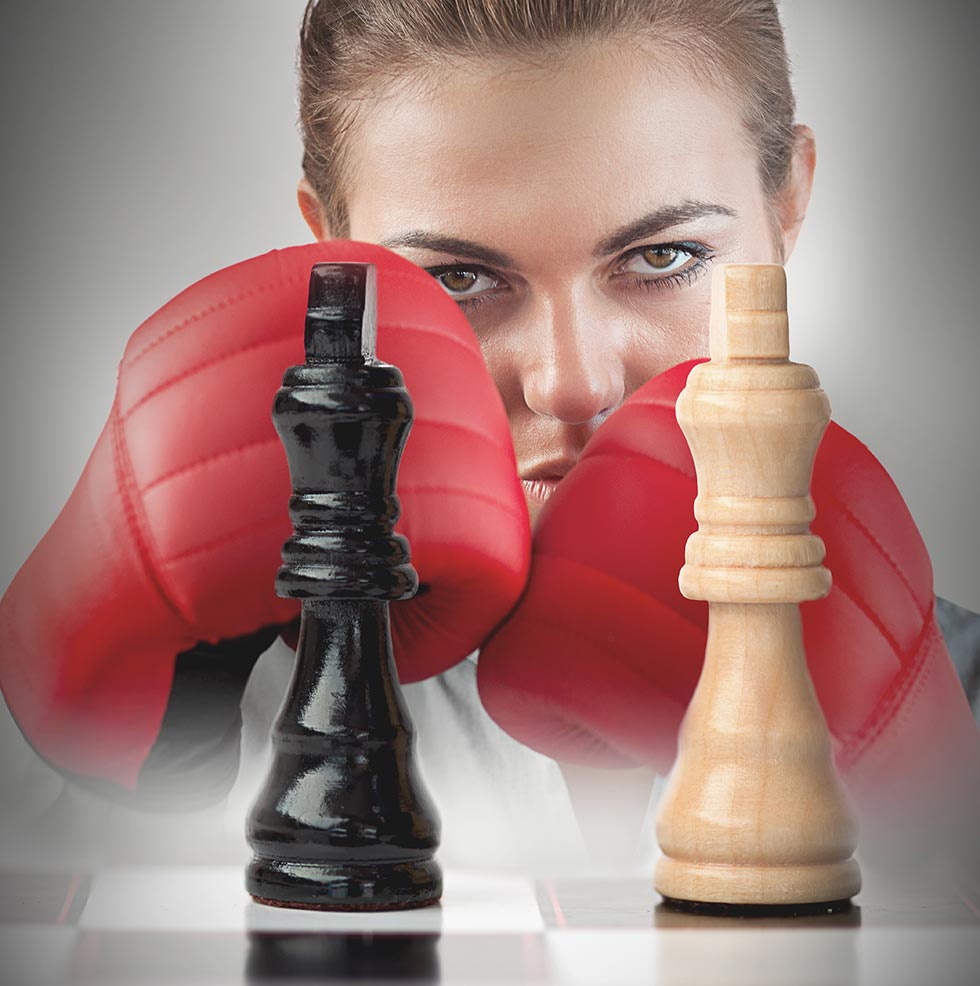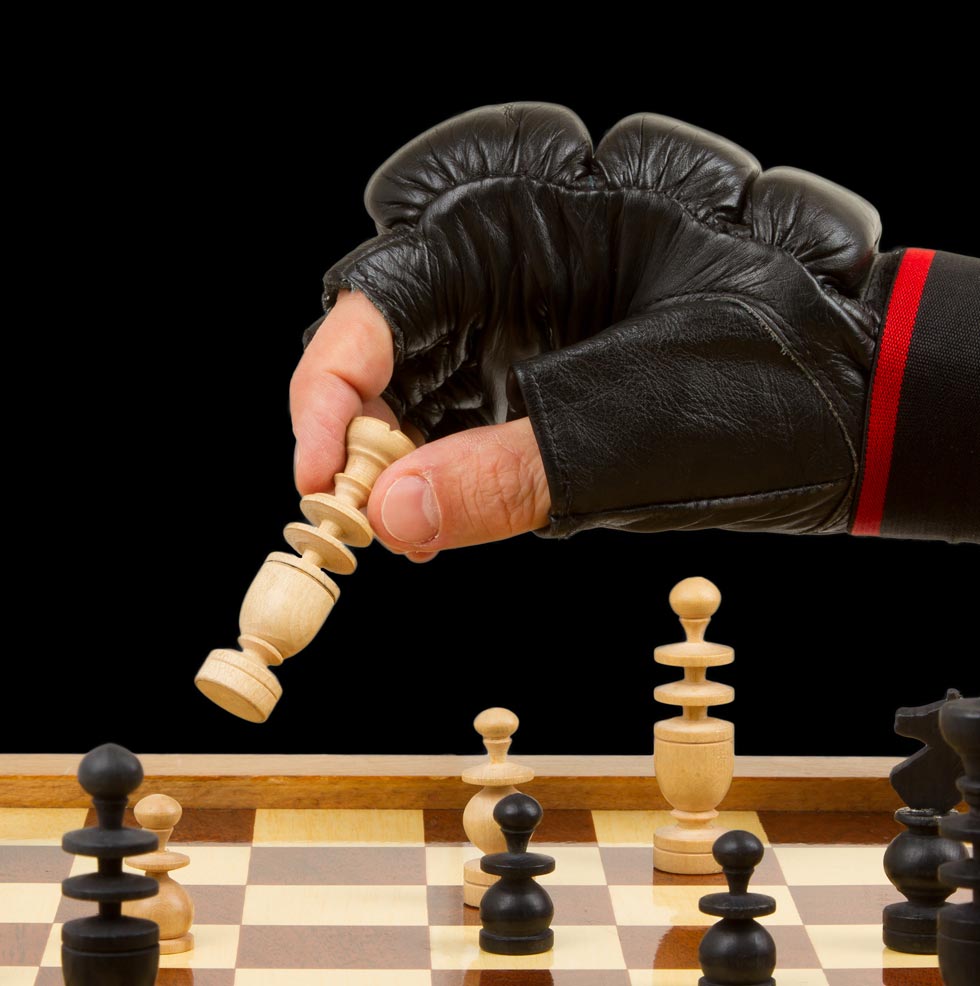26
JANUARY, 2018
A sport in which two competitors alternately cerebrally tax each other’s brains one moment and then physically beat each other’s brains out the next…
Senses reeling and heart pounding after a round of pugilistic pummeling, it’s time to gather thoughts, sit quietly and marshal chess pieces. It sounds like the stuff of Monty Python. But this is a reality.
The only way in which the Monty Python treatment might differ is the addition of a crazed voiceover and the participants having to handle chess pieces without removing their boxing gloves. But there is nothing funny about this. Chessboxing is very much a real deal and is growing in participation and as a spectator sport internationally. And London can lay claim to its earliest origins.
The fact it was invented by a performance artist who took his inspiration for it from a comic adds to the unlikely nature of it all. But then again, if a drug fuelled science fiction writer can invent a religion and vast global business that sucks in millions of folks, then the genesis of anything should not surprise…
Dutchman Lepe Rugingh created it initially as a performance in 2003 – perhaps a comment on the wisdom of boxers and stupidity of chess players, or a scything social swipe at the ignorance of pre-judgements and assumptions. Anyway, it took hold…

Chess boxing (posed by model)
Stock Photograph
Chessboxing is particularly popular in Great Britain, Germany, Russia and India – between them homes of humour, wisdom, irony, invention, sporting prowess and punctuations of tremendous violence.
While the first chessboxing competition took place in Berlin in 2003, it was London in the late 1970’s that might have been the earliest known amalgam of the sports. The Robinson brothers, James and Stewart would hurl themselves into training at their boxing club before sitting down to a round of synapse restoring chess straight afterwards – thus bringing these two very different sports into closer proximity.
The idea was born at the Samuel Montagu Boys Club in Greenwich and The Greenwich Chessboxing Club pre-dated Lep Rugingh’s event by a full 25 years.
Extensive local press coverage at the time helped create a high level of curiosity and interest. The Chessboxing Club closed in 1982 when the Robinson brothers moved out of the area, but by then this new and unlikely pursuit and built some serious momentum.
A match is made up of 11 rounds, six of chess and five of boxing. Victory is achieved by either knockout or checkmate. You can also lose by running out of time on your chess clock which hardly has the thunderous drama of a mighty knockout blow but it is equally final. It can also come down to a points decision.


London Chessboxing has hosted events everywhere from The Royal Albert Hall and York Hall to Bethnal Green Working Men’s Institute. If you fancy a go they will welcome you with open arms, two gloves and a chessboard. No previous experience of either sport is necessary and full training given.
It appears that many participants are drawn from business and banking, so if you do require an outlet to punch a banker or executive, this could be for you…

